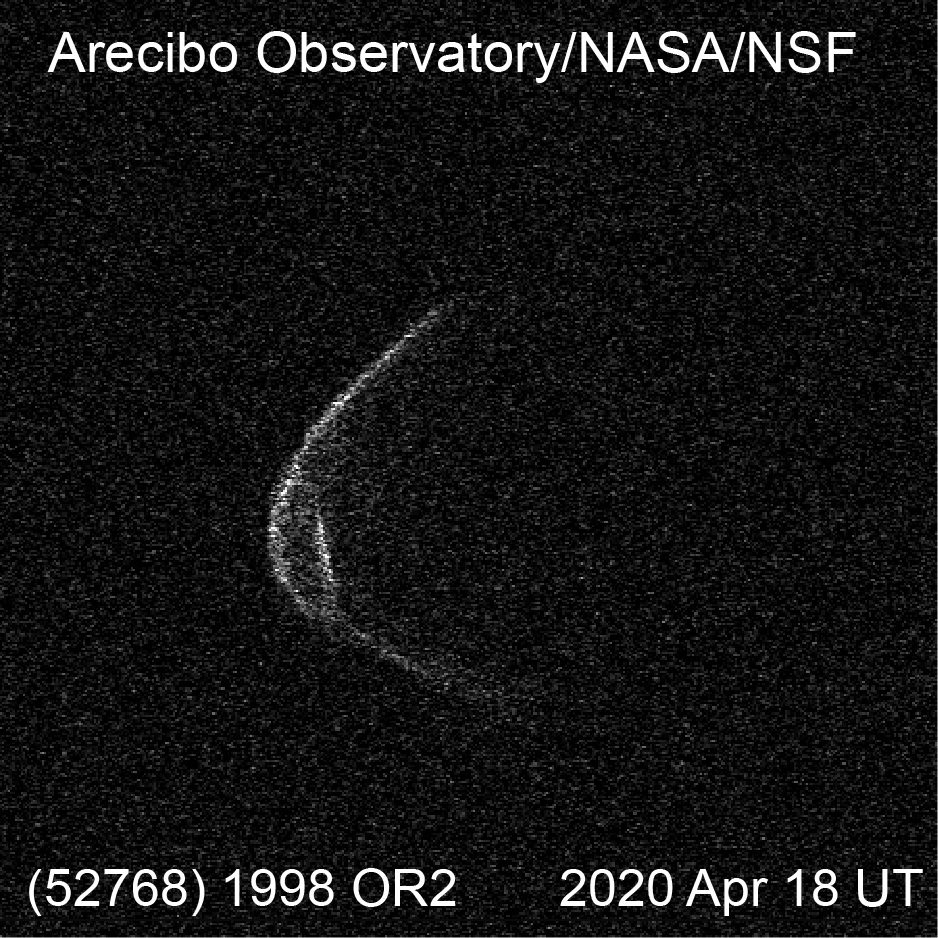Astronomers snap fresh IMAGES of enormous ‘face mask wearing’ asteroid that’s heading our way

A mountain-sized asteroid that’s currently zooming in Earth’s direction has been photographed in unprecedented quality by astronomers who quipped that it appears to be wearing a face mask.
The gigantic space rock – snappily dubbed 1998 OR2 – is set to have its closest flyby of our planet in at least a century when it safely whizzes past Earth at a distance of 6.3 million kilometers (around four million miles) on April 29.
Two teams of space-watchers have already caught glimpses of the asteroid as its presence grows brighter in the night sky, hurtling towards Earth at a speed of around 31,320kph (19,461mph).

Both the Virtual Telescope Project in Rome and the Arecibo Observatory in Puerto Rico released their fresh snaps. The Puerto Rican team joked that the space rock appeared to be keeping in tune with trends here on Earth by wearing a face mask.
“#TeamRadar and the @NAICobservatory staff are taking the proper safety measures as we continue observations. This week we have been observing near-Earth asteroid 1998 OR2, which looks like it’s wearing a mask!” it tweeted.
#TeamRadar and the @NAICobservatory staff are taking the proper safety measures as we continue observations. This week we have been observing near-Earth asteroid 1998 OR2, which looks like it's wearing a mask! It's at least 1.5 km across and is passing 16 lunar distances away! pic.twitter.com/X2mQJCT2Qg
— Arecibo Radar (@AreciboRadar) April 18, 2020
The enormous astronomical object measures more than 1.5km across and is classified as a “potentially hazardous” asteroid because all large space rocks that come within 7,480,000km (4,650,000 miles) of Earth are given the classification.

The flyby offers astronomers a fantastic chance to learn more about the composition of 1998 OR2 as it passes. It will also allow them to take measurements of the planetoid in order to refine how it sizes asteroids.
Tracking giant asteroids also helps scientists to concoct measures for defending Earth against objects that could potentially pose a real risk to our planet.
Like this story? Share it with a friend!













